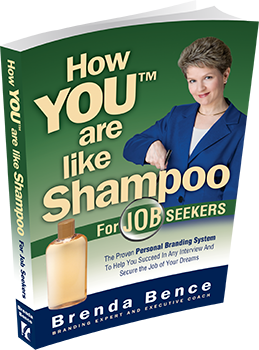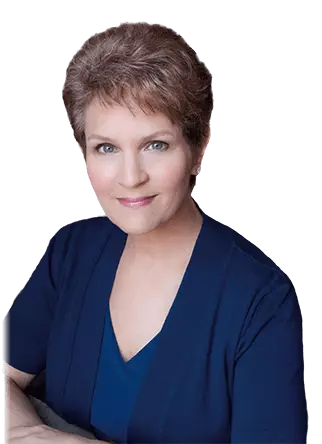You’ve had a great interview, and you feel strongly that you’re a top contender for the job. Maybe the interviewer even told you that you’re the #1 choice. Even so, this is not the time to rest on your laurels. How you present yourself after an interview is just as important as what you did before and during the interview. In fact, some candidates have made mistakes after their interviews that took them from the top of the list to the bottom.
The solution? Defining and communicating a strong “job-seeker personal brand” can help you to maintain your place and become the candidate hired for the job. Personal branding when it comes to a job search is all about how you want potential employers to perceive, think, and feel about you as compared to other candidates. So, branding yourself helps you influence potential employers and allows you to establish a strong connection and relationship with your interviewer both before and during the interview. What many applicants forget, however, is that staying consistent with their personal brand after the interview is just as important.
For example, if you have established a very professional personal brand before and during your interview, how might you be perceived if you suddenly begin to send e-mails to your interviewer with emoticons? You might believe that it’s okay to be casual because you’ve built a friendly enough relationship with the interviewer – but be careful. Stay true to your desired personal brand of professionalism, and you’ll have a much better shot at that great job you want so much. Here are some additional tips for keeping your brand in check after an interview:
Before You Do Anything Else…
The first thing to do after an interview is to sit down and summarize it while everything is fresh in your mind. Don’t put it off! Simply unload your mind before anything leaves your memory. It’s vital to recall the most important points that you discussed with the interviewer so that you can refer to them in subsequent e-mails and interviews. You won’t communicate a conscientious personal brand if the interviewer brings something up from your first interview that you no longer remember. If you can recall your discussion in great detail, however, your interviewer will be impressed – and you’ll stick out of the crowd. After you have written down the most important parts of the interview, also take the time to jot down anything you believe you could improve. How well did you answer the tough questions? Could you do better in subsequent interviews? If so, how? Make note of whether you lost your cool or reacted to a challenge by becoming flustered. If you note where your interview skills need improvement, you can develop an action plan later. Even if you feel you did poorly in the interview, don’t fret. Just look ahead, and use it as a way to learn from your mistakes.
Be Appreciative.
Statistics show that only 10% of job applicants write a thank you note after their interviews. So, this is a very simple but powerful way to communicate a polite personal brand. Within 24 hours, send a thank you e-mail or snail mail to your interviewer. It only takes a few minutes, but you will stand out from the other 90% of applicants who won’t bother to do so. Take the time to say that you enjoyed meeting the interviewer, and customize the note so that it specifically refers in some way to what you talked about. Reiterate your excitement about the possibility of joining the company and why you’re a great fit for the job. If you interviewed with more than one person, send a thank you note to each of them.
Don’t Drop the Ball.
Another thing that few job applicants do is follow up after the interview. If the interviewer doesn’t give you a particular time by which you will be notified, give it about a week before calling, leaving a voice-mail, or sending an e-mail, to say that you’re still interested in working for the company and that you believe you’re right for the job. It will communicate a diligent and serious personal brand, which comes across as someone who will be dedicated to the job. How about if you have been told when a decision will be made? Let’s say that your interviewer says someone will be chosen within two weeks of your interview. Send a follow-up a few days before the two-week mark. If you don’t receive a response, feel free to follow up again in another week or two. If you haven’t received a response after following up two or three times, your energy is probably best transferred to finding a different job. But don’t hesitate to show that you’re excited about working with the company. The simple fact that you follow up may be just enough to put you ahead of another applicant who is equal to you in other respects.
The Second Time Around.
If you are called for a second or third interview, don’t throw off your interviewer by suddenly changing your strategy! Be consistent with your personal brand. It got you the second interview, so you did something right the first time. Continue to communicate the same qualities and attributes. This is also true of matching the dress of the company. Let’s say that during your first interview you noticed that a company’s employees were all in business casual dress. Should you then dress more casually for your second or third interview? Most Human Resources professionals agree that it’s best to err on the side of caution. An interview is a more formal meeting than the average work day so, unless the interviewer specifically tells you to dress more casually for an upcoming interview, dress as formally as you did the first time. You don’t want to act as though you’re already a part of the team before they say, “You’re hired!”
The Word “No” May Not Be the End.
Don’t let a rejection defeat you. Simply focus your efforts on the next job, and assume the one you lost wasn’t right for you. Baseball players miss more balls than they hit, and even the top movie stars occasionally put out a film that loses money. If you don’t get the job, take the time anyway to send a follow-up thank you note via email or snail mail. Tell the interviewer that you would like to be considered for other openings in the company. You never know what might come of a note like this. People have actually gotten jobs later on this way. If you were second in contention, the person who was hired may not work out or may leave shortly after starting. You never know! If you’re still interested in the company, keep your name in the hat.
Many job applicants fail to stay the course with their personal brands during the job search process. If you remain consistent before, during, and even after your interviews, you will give yourself a decided edge and find yourself one step closer to the job you really want.

How YOU™ are like Shampoo: For Job Seekers
Follow Brenda’s step-by-step personal branding process to land the job and the career you’ve always wanted.

 Brenda Bence is sought after across six continents as a Certified Executive Leadership Coach, internationally recognized branding expert, and the author of 11 award-winning books on leadership, coaching, and branding. A Global Certified Speaking Professional, Brenda is in demand as a top-rated motivational speaker, engaging audiences around the world, both in-person and virtually.
Brenda Bence is sought after across six continents as a Certified Executive Leadership Coach, internationally recognized branding expert, and the author of 11 award-winning books on leadership, coaching, and branding. A Global Certified Speaking Professional, Brenda is in demand as a top-rated motivational speaker, engaging audiences around the world, both in-person and virtually.